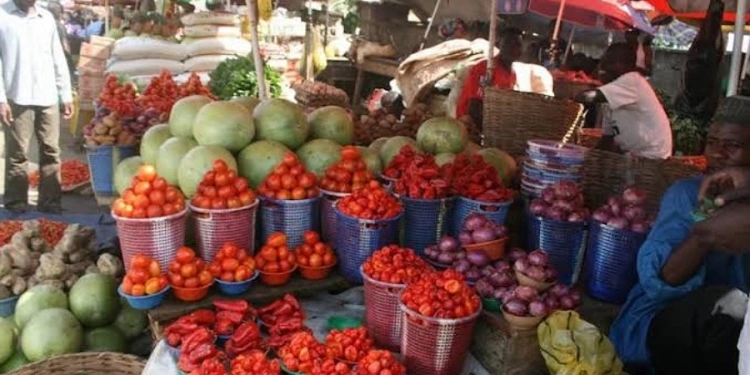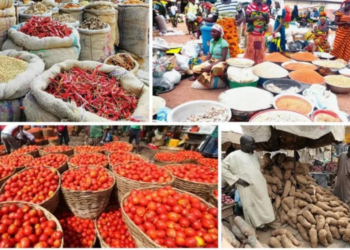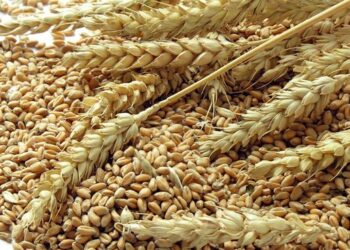It appears Nigerians are in for good times in the new year, as the latest Household Survey conducted by Nairametrics Research Team showed that the prices of some food items witnessed a significant drop.
The Survey revealed that while the prices of tomatoes and pepper crashed significantly, the prices of local rice, yam and other items also witnessed a drop but not as low as their vegetable counterpart.
For instance, a big basket of round shaped tomatoes currently sells for an average of N5,000 compared to N8,000 recorded in December, which represents a 37.5% decrease.
[READ MORE: ‘Stony rice’ flood Lagos Markets as prices drop across board)
Also, the price of a bag of pepper dropped again to N8,000 from N10,000 indicating a 20% decrease. Similarly, the price of locally made rice continues to ease off as it sells for an average of N20,750 from an initial average of N21,000 in December. Meanwhile, the price of imported rice rose slightly.
The survey covers major items that increased in price, items that witnessed reductions in prices, items that maintained initial prices, special items and market insight.

Items that witnessed reductions in prices
- The price of a big basket of tomatoes that was sold for an average of N8,000 in December, now sells within the range of N4,000 and N5,000, while medium-sized baskets of round shaped tomatoes now cost an average of N3,500, a 30% reduction from N5,000 recorded in December.
- A large bag of pepper dropped to N8,000 from N10,000, while a small bag costs N6,000 compared to N8,000 reported in December.
- Locally made rice brands (Mama’s Pride and Mama Gold) sell for an average of N20,750 from an initial average of N21,000 in December.
- Also, the price of a big sized tuber of yam reduced significantly to an average of N813, a 5.8% decrease compared to N863 recorded in December.
- A small sized tuber of yam also sells for an average of N600, a 2.04% reduction from an initial average of N613.
- A 50kg bag of white Garri now sells for an average of N6,125 from N6,200 recorded two weeks ago.
- A crate of eggs that was initially sold for an average of N1,000 now sells for an average of N975, representing a 2.5% reduction within two weeks.

Items that increased in price
- The price of a 50kg bag of Caprice rose to an average of N26,167 from N25,750 recorded in December, representing 1.19% increase.
- A 5-litre gallon of local vegetable oil costs an average of N2,325 compared to N2,250 being sold two weeks ago.
- Refilling of a 12.5kg cylinder of gas increased to an average of N4,000 from an initial average of N3,975, indicating 0.63% increase.
- Also, refilling a 5kg gas cylinder now costs an average of N1,725 from N1,688 recorded a fortnight ago.
Items that maintained initial prices
- A 50kg bag of Royal Stallion rice still costs an average of N27,000.
- The prices of all brands of beans remain unchanged as a big bag of brown beans still costs an average of N23,500; a 50kg bag of white beans costs N21,250, and Oloyin costs an average of N13,000.
- Big baskets of Irish Potatoes sell for an average of N22,000, while sweet potatoes of the same size cost N4,500.
- The price of locally made palm oil still remains on the high since it nosedived in December at N2,125 (5 litres) and N11,125 (25 litres).

Special Items/markets
The prices of frozen foods dropped after the hike recorded following the closure of the country’s land border. Slates of chicken lap and Orobo chicken now cost an average of N12,000 compared to N14,000 recorded in December. Also, a carton of full Chicken reduced to N13,000 from N14,000, while turkey now costs an average of N14,000.
Mile 12 market recorded a massive influx of onions. Despite this, the price of a big bag of new onions increased to N26,000 from N24,000 recorded in December, while a bag of dry onions maintains an average of N28,000.
The price of a bag of yellow maize remains unchanged at an average of N14,000 at Mile 12 and Mushin markets. Also, a bag of white maize varied across the markets as it costs an average of N16,000 at Mile 12 market and N15,000 at Mushin market.
Market Insight
The significant drop witnessed in the price of round shaped tomatoes was attributed to massive harvest recorded in the farms due to the harmattan period in December. This was according to a major tomato seller interviewed at Mile 12 market.
Jubril said, “Harmattan weather is actually favourable to the harvest of tomatoes, as we now witness an increase in the supply of tomatoes, hereby driving the price down in January.”
Lastly, several brands of locally-made rice continue to compete for market dominance, as Nairametrics Research Team discovered new brands of locally made rice across the various markets in Lagos state. Some new brands cited by the team include Solar rice, Moringa, Tiamin rice, BML rice, Confluence rice, Royal Naija and Rose classic rice.
[table id=232 /]
About Nairametrics Food Price Survey
The Nairametrics Food Price Watch is a bi-weekly household market survey that covers the prices of major food items, with emphasis on five major markets in Lagos – Mushin Market, Daleko Market, Oyingbo Market, Idi-Oro Market and Mile 12.





















Could it be the price drop is as a result of change in season. Demand and supply?
May God help us